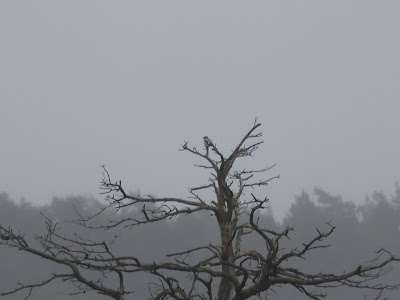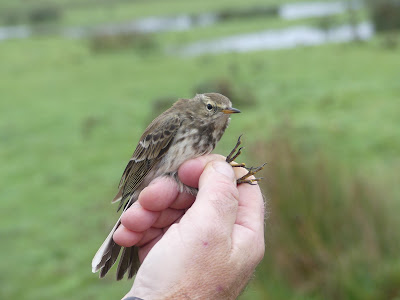The weather conditions were favourable today so Chris & I decided to try, yet again, for Water Pipits. The moor is becoming increasingly wet with so much rain lately so we expected that the birds would still be scattered across the moor. We used 4 single 3 panelled nets, with audio-lures, and set slightly away from the areas of open water that birds often feed around. We know that the birds are extremely good at avoiding nets so opted instead for marshy areas interspersed with clumps of longer grass where there was more chance that a net may not be seen. Another advantage of working in this miry area is that walkers certainly keep their distance should they decide to ask us about our activities.
It was another session when we failed to catch any Water Pipit, but if there's one thing to be said for Staines Moor Water Pipit session failures, the bycatch can be really quite exceptional! Who could complain about Stonechat, Reed Bunting and even for the second time a wintering Dartford Warbler.
Totals: 8
Wren - 2
Dunnock - 2
Stonechat - 1
Dartford Warbler - 1
Reed Bunting - 2
































